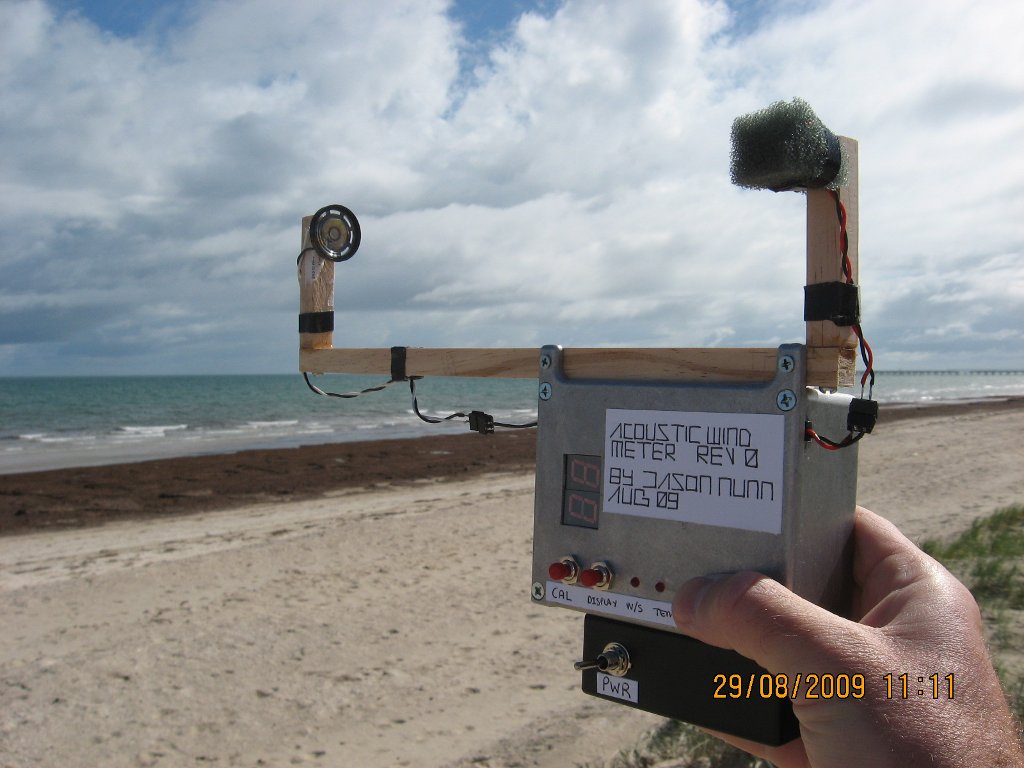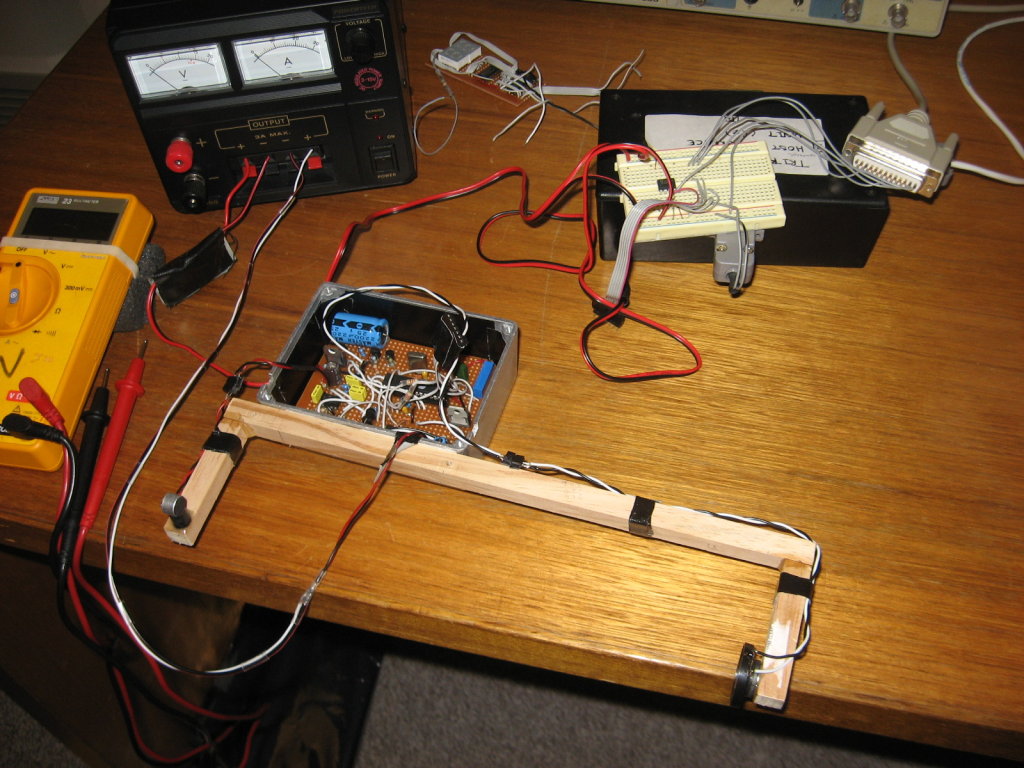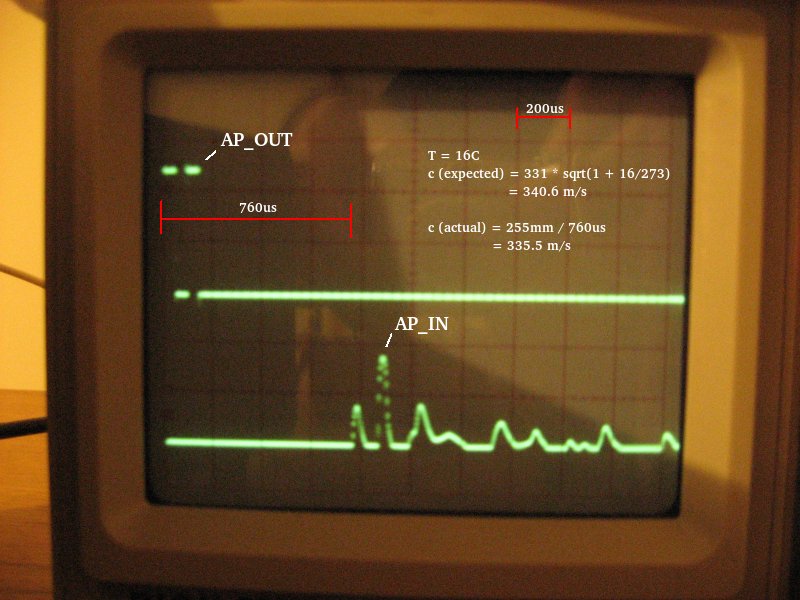

I developed this device to measure wind speed at the beach for my (at the time) new Windsurfing hobby. I originally brought an anemometer from Jaycar. However, it seemed to suffer EMI issues and was too unreliable. I decided to make one using "bits around the house" :). I read the Anemometer wiki and studied it's measurement techniques. The acoustic method worked with success :)

This device uses the Doppler effect of sound waves to calculate wind speed. When a police car sounding it's siren travels towards you, it's siren will sound at a higher pitch. This is because the sound from it is traveling towards you much more quicker than it would be be of the car was stationary. The effect of this is the sound is a higher pitched sound. It is this effect that we can compute wind speed.
The device emits a short burst of pulses at 10khz from a small speaker. 256mm down a wooden beam, a microphone senses these pulses (See Figure below). A micro controller measures the time it takes for the pulses to travel from the speaker to the microphone. From this, the speed of sound is calculated.

In still air at 0 degrees C, the sound will take 330 m/s (640 knots). However, if the air between the speaker and the microphone is traveling (towards the microphone) at 5 m/s (10 knots), then the apparent speed of sound will be 335 m/s (650 knots). If the speed of sound is known in still air, when measured in moving air, the difference will be the speed of the moving air.
The unit takes a measurement of the speed of sound in still air (normal to the wind). This measurement is noted. The unit is then pointed into the wind and another measurement is taken. The difference in these two speeds will equal the wind speed. The wind speed is then displayed on the unit's display.
Below is a oscilloscope trace. The top trace is the transmit pulse. The bottom trace is the receive pulse 760us later.
